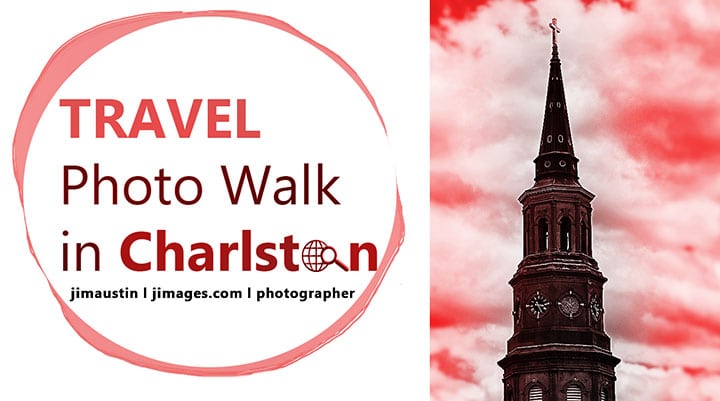
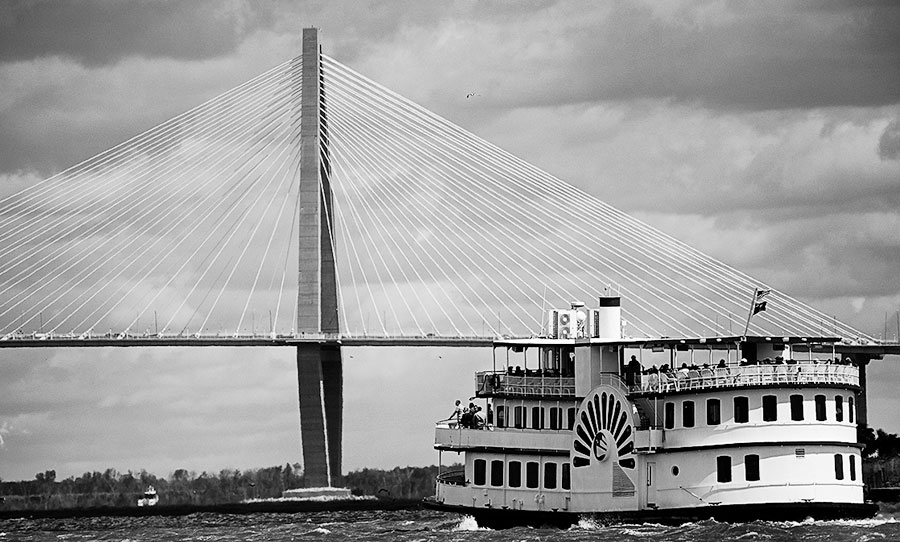
Arthur J Ravenel Bridge. 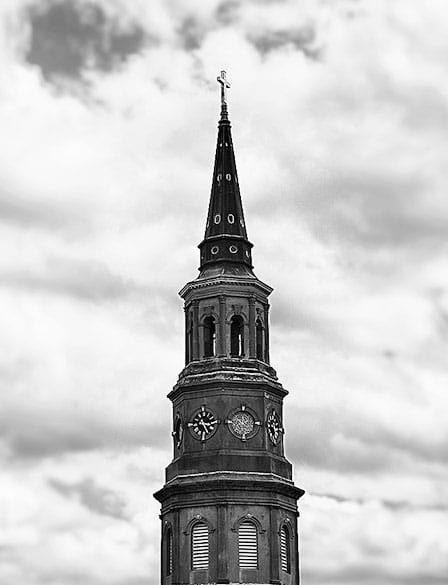
Saint Philip’s Church steeple.
IN THE OLD CITY
Take your camera into Charleston’s old city and stroll along its streets. As you take photographs, imagine the echoes of footfalls of those who worshiped, fought and built their lives in this Holy City. Passing over iconic French Quarter cobblestone streets and walking by pastel-hued homes, you hear the clip-clop cadence as horse-drawn carriages go by. Photographing this aesthetically pleasing city, you breath in slowly, inhaling the scent of gardenias. Charleston’s atmosphere is rich with layers of history, so it enchants the senses to saunter through Charleston’s old neighborhoods, deep in the cultural capitol of the South.
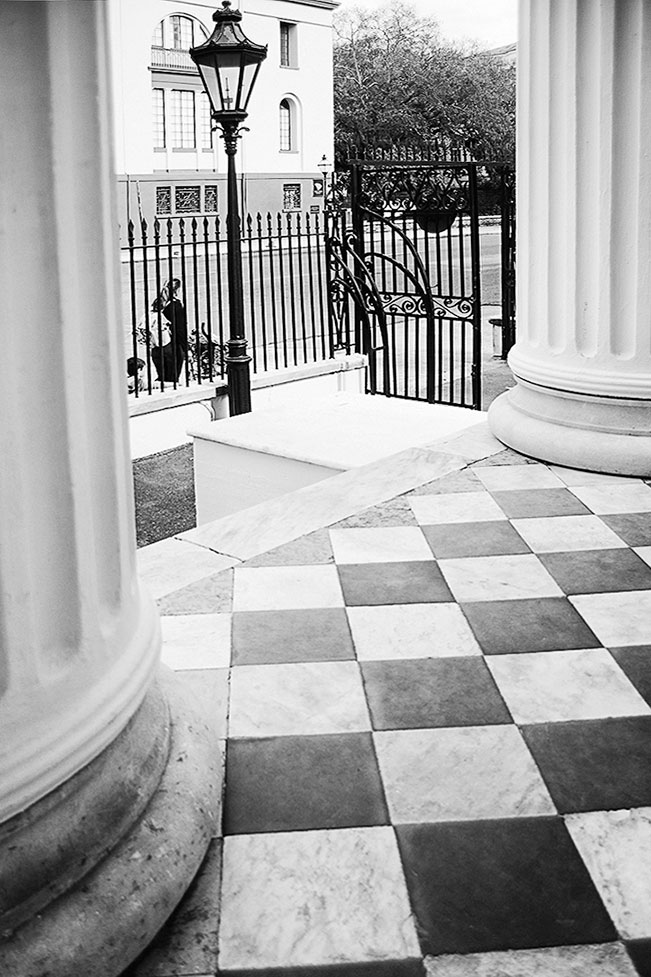
Each time you come to Charleston, the experience is unique. You have a choice of eight neighborhoods, or sections, just in downtown alone. (Explore a Detailed Map Here). The streets I walked were all located in the French Quarter, a neighborhood on the southeast corner of the downtown Charleston peninsula. The first stop was the Powder Magazine…
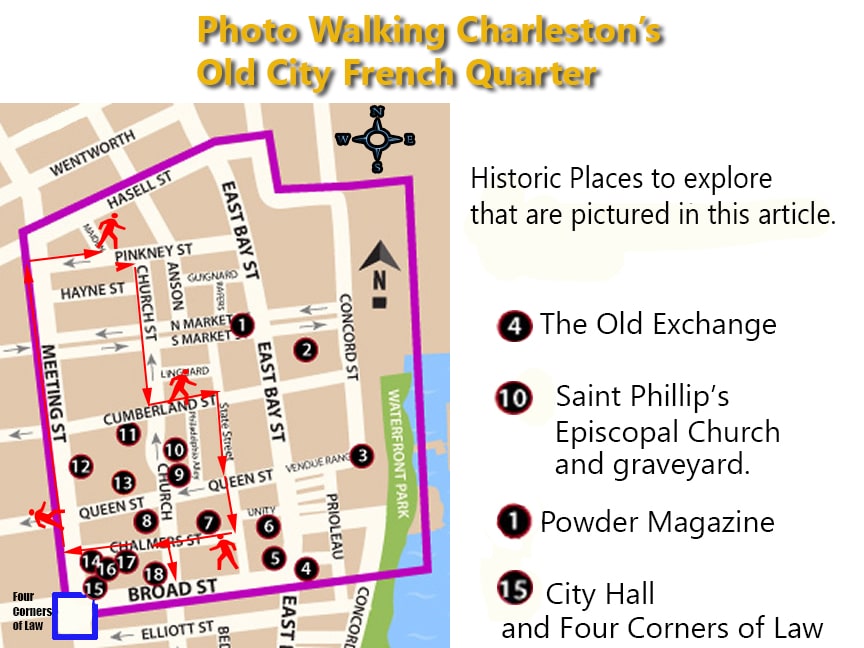
KEEPING the POWDER DRY
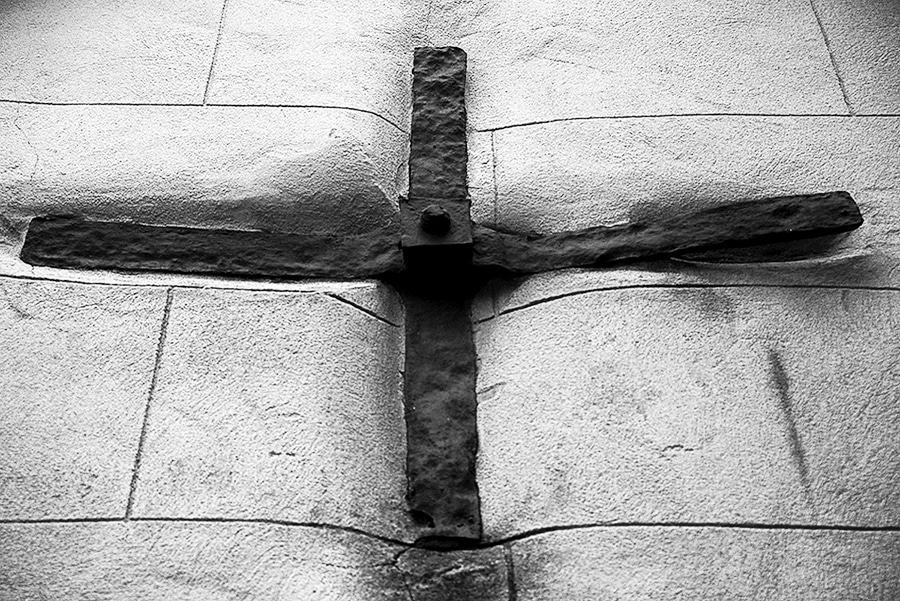
Charleston was once a walled, fortified city. Today, reminders of past conflicts are visible. The Powder Magazine at 79 Cumberland Street takes you to an era when munition storage for defense was a vital concern. Used as a gunpowder store during the Revolutionary War, the Powder Magazine is the oldest surviving building in the Carolina Province for a good reason: it is massively fortified. Thirty-two-inch thick walls and a brick floor provide fortification. Iron earthquake bolts are embedded in its outer walls, ensuring the walls would collapse inward in a powerful tremor. A pyramid of sand above the ceiling ensures that, in the event of a fiery powder explosion, the fire will be smothered. Original “firelocks” (flintlocks) are on display along with a model of the city. Muskets, powder barrels, a cannon and histories of American conflicts are on view. Admission is $6 and tour guides are inside, ready to share details of 18th century Charleston life.
COBBLESTONES on CHALMERS: CHARLESTON’s ROCKY ROAD
Continuing South, when you hear the clip-clop of horses’ feet on cobblestones, you may be on Chalmers Street. Centuries of wear impact these stones, brought by sailing ships from England as ballast. This “rocky road” is named for physician Dr. Lionel Chalmers and it’s one of eight cobblestone streets still used today. Chalmers Street has a sensuous, semi-tropical allure.
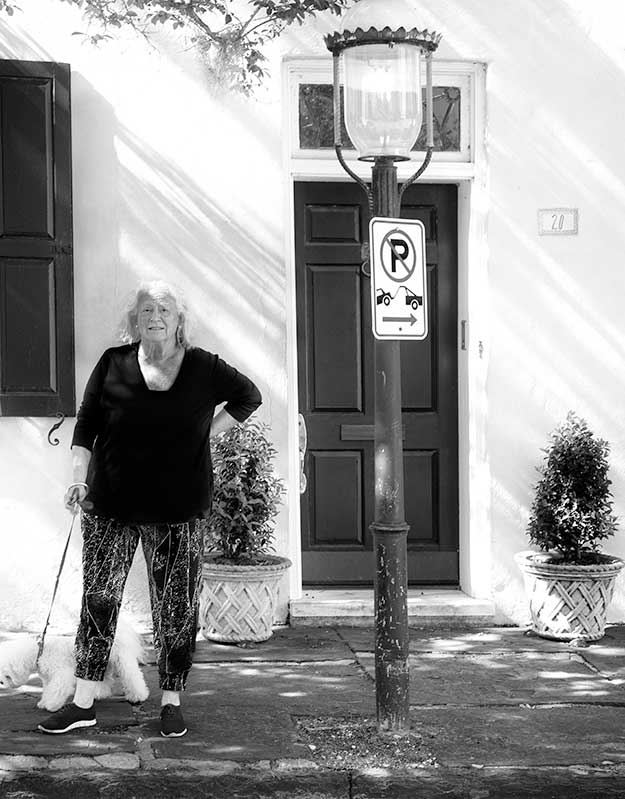
At 20 Chalmers Street, on our photo walk, we met and chatted with Mrs. Eda Bigner, and learned why she particularly adores this block on Chalmers. A lifelong artist, Eda was born and reared in an 18th century home in Copenhagen. Coming to America by boat, she arrived in Charleston and soon after purchased her stucco over brick Charleston manse with its courtyard garden near her crepe myrtles and boxwood, because its ambiance reminded her of her 1770’s-era childhood home in Denmark’s Christianshavn island neighborhood.
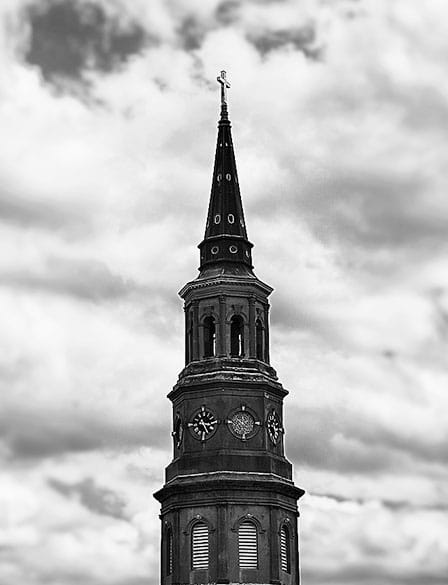
JOHN C. CALHOUN
After Chalmers Street, wander over to Church Street. Stop at Saint Philip’s Church to see its interior. Cross the street to the church graveyard to see the tomb of Senator and Vice-President John C. Calhoun. Locals say that Calhoun’s physical body lies in the East graveyard, of lesser stature than the West cemetery, since Calhoun was not born in Charleston.
DRIVING AWAY DEMONS AT SAINT MICHAEL’S CHURCH
Listen. You hear bells. For decades, after they were recast and repaired, Saint Michael’s bells could only be chimed. In the past few years, however, local ringers learned the Christian art form of change ringing. Today, pulled by eight coordinated pullers, the bells again peal out over Charleston from Saint Michael’s church tower. These bells are arranged to a diatonic scale of E-flat. The lower three bells (named for archangels) were imported from England in 1764. At the time, ringing church bells was believed to drive away demons.
IN JAIL? ARRANGE BAIL, SEND MAIL, SAY HAIL MARY
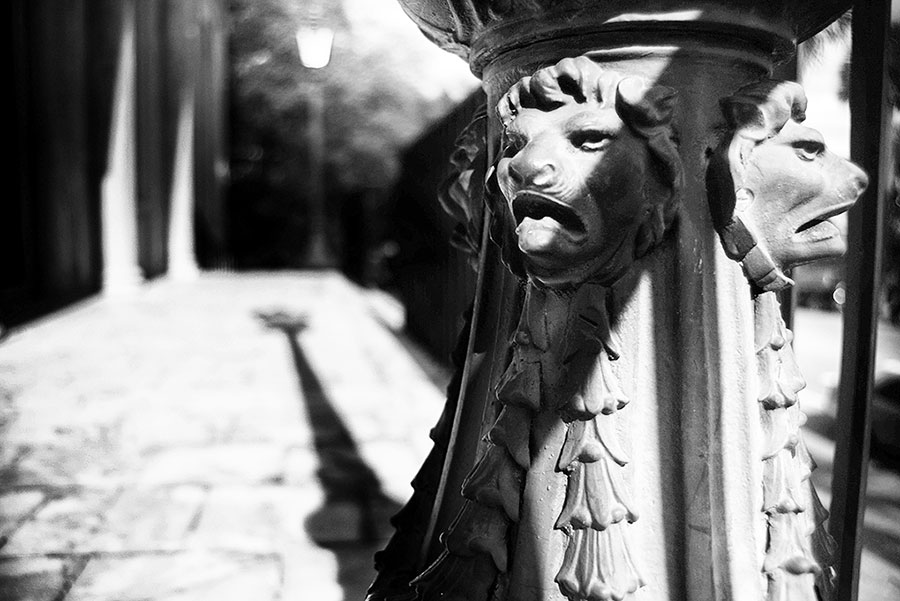
Strolling South down Meeting, you come to the intersection with Broad Street. You’ve found the Four Corners of Law. At 71 Broad Street, ecclesiastical law is represented by Saint Michael’s Church. State law is present in the Charleston County Courthouse at 100 Broad Street. City law is embodied in Charleston’s City Hall at 80 Broad Street. Federal law is represented by the U.S. Post Office and Federal Courthouse at 83 Broad Street. About his historic place, it’s said that if you land in jail, you can post bail, send mail, and say a Hail Mary when you are free.
You are in the cultural center of the South. The building at 84 Broad Street, where the Declaration of Independence was read to the public, is the Old SC Statehouse. Charleston City Hall was proposed by Alexander Hamilton and modeled after the Bank of England structure. This photogenic building was designed by Gabriel Manigault in the Adam style of Scottish brothers James and Robert Adam, for whom the Adamesque style was named. The architectural style refers to a single unified theme for exterior, interior walls and decor. Make time to photograph any of the historic buildings at the Four Corners of Law.
BETWEEN CHURCH AND STATE
The Blind Tiger is an option if you need refreshment. A “blind tiger” was an illegal pleasure house during prohibition. Charleston’s Blind Tiger is the historic establishment at 36 and 38 Broad Street. You find it by walking on Broad between Church Street and State Street as it’s located exactly halfway between church and state. When a coffee fix is needed, try a black julep or lavender latte at Second State Coffee (formerly Black Tap Coffee) on the corner of Kirkland at 70 1/2 Beaufain Street. Let go, relax, and review your photographs from your distinctive ramble in the Holy City of Charleston, South Carolina.
ACKNOWLEDGEMENT
I am grateful to my friend Mr. Brooks Roberts Fudenberg, attorney, for his warm hospitality, expert Charleston history and his personal insights which helped make this article possible.
LINKS
1) The Powder Magazine 2) Saint Michael’s Church 3) Four Corners of Law 4) Blind Tiger Historical Pub 5) Second State Coffee 6) Chalmers Street.
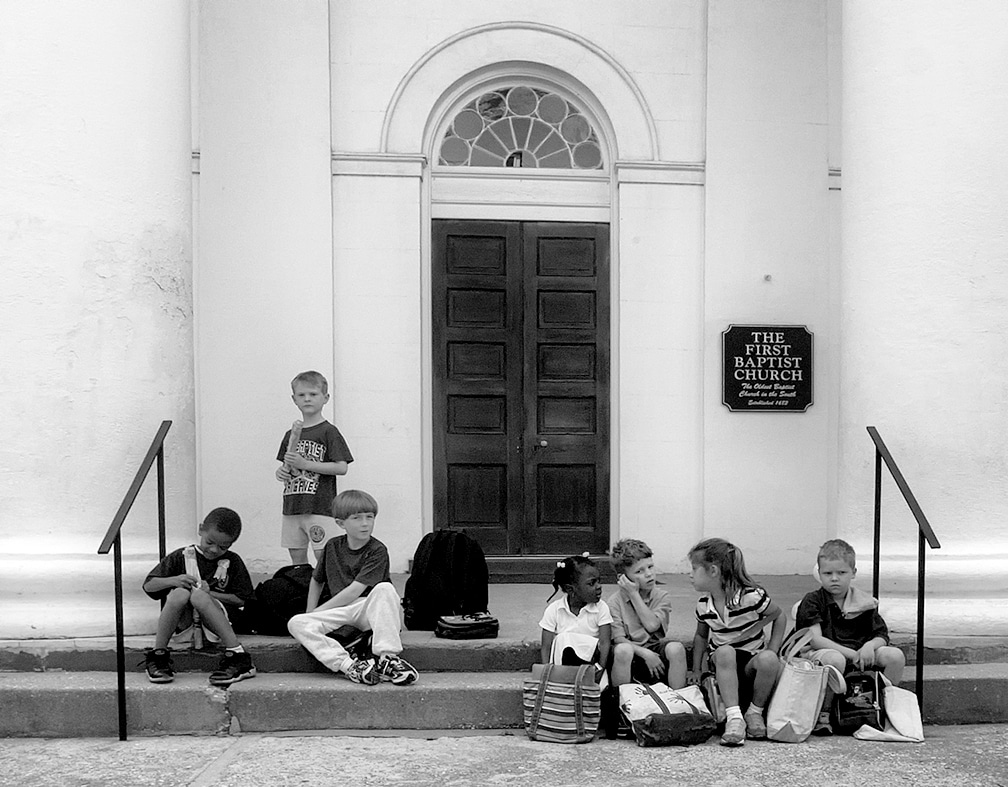
ABOUT THE AUTHOR


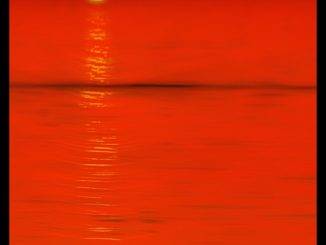


Leave a Reply